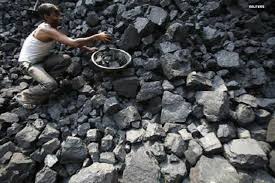 Adani Enterprises this week reported its first-quarter results for the 2015-16 financial year, and the earnings report includes one singular 27-word sentence that suggests the company’s once-ambitious mine designs on Australia have petered out.
Adani Enterprises this week reported its first-quarter results for the 2015-16 financial year, and the earnings report includes one singular 27-word sentence that suggests the company’s once-ambitious mine designs on Australia have petered out.
Here’s the passage:
“With progressive policy measures by the government, we believe that Adani Enterprises is better placed to tap the growth potential in domestic mining and renewable energy space.”
Adani is an Indian company, and the government of which it speaks is the government of India, which—as we’ve noted frequently in this space over the past few months and in deep detail in a major report we published earlier this week—is on a historical mission to transform its electricity sector.
When Adani says it’s “better placed” to focus on domestic mining, one might reasonably ask better than what? On its former obsession with turning the Galilee Basin of Northern Queensland into one of the biggest open-pit coal fields in the world with its Carmichael mine project, a proposition that seems all but doomed now as banks step back from supporting it, as public opposition mounts, as—by Adani’s own admission above—the company’s better bet now is elsewhere.
That elsewhere is being shaped and defined at an astonishing pace by the administration of Prime Minister Narendra Modi, in office now for only a year or so and in charge of an India government that is remaking its power sector. Cornerstones of the Indian electricity revolution include aggressive development of renewable resources, crackdowns and improvements to grid efficiency, new mechanisms to encourage foreign investments, and an eventually likely end to coal imports.
ADANI HAS ITS EGGS IN FAR MORE BASKETS, ANYWAY, THAN THE GALILEE BASIN. It owns a major coal-trading business in India, an Indian agricultural trading business, an Indian gas-distribution business, a 4-5Mtpa coal mine in Indonesia, three major coal deposits in India (with its first Indian mine now online producing at an annualized 3-4Mtpa rate) and a 648-megawatt, US$700 million solar development in Tamil Nadu, the first of many similar proposed projects.
Adani Enterprises has an equity book value of US$2 billion and net debt of US$3 billion, which means the company after its recent corporate restructuring has a net debt-to-equity ratio of 150 percent, which means in turn that the group is already fully leveraged even before financing the large number of new expansion projects under consideration. This detail confirms that the larger Adani Group will use Adani Enterprises (rather than the excessively leveraged Adani Power) as its vehicle for developing more than US$10 billion on various solar-manufacturing and solar-project initiatives in India.
ITS NEW AMBITIONS ON THIS FRONT ARE APPARENT. AT ITS ANNUAL GENERAL MEETING THIS WEEK, Adani Enterprises received approval to undertake an equity raising of up to US$950 million should the need arise. Such a move would leave the group with a more sensible level of financial leverage, but would also leave it well short of the capital required to develop its many projects in India, let alone enough to undertake the Galilee coal proposal.
One other note, Adani Enterprises reported earnings before interest, tax, depreciation and amortization (EBITDA) had increased18 percent year over year to US$149 million and net profit after tax was up 43 percent year over year to US$59 million for quarter that ended in June, despite revenues having falling 9 percent year over year. The losses associated with the development of the Carmichael project—years in the making now even as the odds against it actually being built diminish day by day—most likely continue to be capitalized against the balance sheet rather than through the income statement.
Carmichael, it seems, is no longer the hope, nor the priority it was.
Tim Buckley is IEEFA’s director of energy finance studies, Australasia.
Source: IEEFA. Reproduced with permission.







